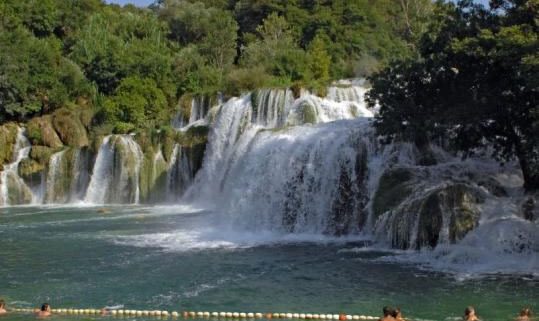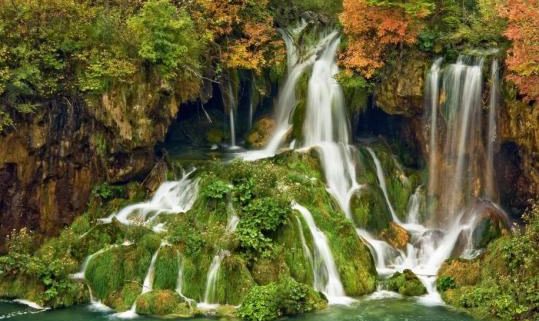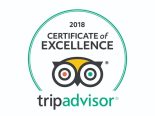Nationalparks

Nationalpark Krka
Der wunderschöne Karstfluss Krka fließt still in den Seen die er bildet und rauscht dann rasend schnell über die zahlreichen Kaskaden in seinem Lauf, mit einmaligen Wasserfällen.
Die Schönheit und Vielfältigkeit dieses Flusslaufes erinnern an eine Orchestersymphonie die nach dem Dirigentenstab des Schaffers gespielt wird.Tausende von Jahren beißt sich der Fluss Krka durch den Kalkstein und bildet so seine weltbekannten Wasserfälle.
Die besonderen Travertinkaskaden über die das Wasser stürzt sind eine sehr seltene Formation auf dieser Welt.
Im Jahre 1985 erkannte man den Wert dieses Flusses und beschloss 46 Kilometer des Flusslaufes zu schützen, zusammen mit einem 111 Km2 großen Gebiet um den Fluss, das als Nationalpark erklärt wurde.


Die Plitvicer Seen
Der Nationalpark „Plitvicer Seen“ ist eine der bekanntesten Naturschönheiten in Europa. Der Park umfasst ein dicht bewaldetes Gebiet, inmitten dessen sich terrassenförmig, sechzehn kleinere und größere Seen mit blaugrünem, kristallklarem Wasser aneinander reihen.
Die Seen werden aus zahlreichen Bächen und Flüssen mit Wasser gespeist und sie sind untereinander mit schäumenden Kaskaden und Wasserfällen verbunden. Über die Jahrtausende hat sich das Wasser hier durch die Felsen und Formationen gekämpft und so dieses Naturwunder geschaffen.
Durch Ablagerungen von Kalziumkarbonat aus dem Wasser und der Mitwirkung von besonderen Algen und Moosen, wuchsen an Stellen mit natürlichen Hindernissen riesige Travertinbarrieren, die den ursprünglichen Wasserlauf unterbrochen haben und so die Seen geschaffen wurden, die über kleine Kanäle, Wasserfälle und Kaskaden verbunden sind.
Diese Ablagerungen bilden einen weißen Film über Bäume und anderes Material auf dem Wassergrund, dass dann darunter versteinert und den Seen einen besonderen Ausdruck gibt. Mit seiner mechanischen Kraft zerstört das Wasser gleichzeitig einzelne Travertinbarrieren.
Das macht diesen gesamten Prozess sehr dynamisch und führt zu ständigen Veränderungen der Formen der Seen und der Barrieren über die das Wasser fließt. Es handelt sich hier um einen bio-dynamischen Prozess der eine erstklassige Attraktion und ein sehr interessantes wissenschaftlichen Phänomen ist.
Der Prozess dieser natürlichen Wandlung der Formen dauert bis heute dank der ungestörten, ökologischen Verhältnisse im Park. Neben den Seen befinden sich auch einige Höhlen mit Funden menschlicher Anwesenheit aus der Vorgeschichte. Der Nationalpark erstreckt sich auf 29482 Hektar, davon stehen 22308 unter Wald und 217 unter Wasser, wobei die restlichen 6957 Hektar auf Wiesen und Dorfgemeinschaften abfallen.
Der hiesige Wald wird stellenweise zu einem wahren, natürlichen Urwald und diesem Naturreichtum entspricht auch die Vielfältigkeit der Tier- und Pflanzenwelt.
Neben zahlreichen Vogelarten und Kleinwild, finden sich im Park Rehe, Bären, Wölfe, Wildschweine, Wildkatzen und im Wasser natürlich auch Forellen. Jagd, Fischfang und Baden in den Seen sind strikt verboten.
In den Nationalpark führen zwei Eingänge (Obere und Untere Seen)… Auf der Karte des Nationalparks sind diese mit den Nummern 1 und 2 gekennzeichnet. Große Infotafeln an den Eingängen geben den Besuchern alle nötigen Angaben über die Vorschriften und die einzelnen Gehwege durch den Park, besondere Ausblickpunkte, Parkplätze, Hotels und Gastroeinrichtungen, Postamt, Bushaltestellen, Ambulanz u.ä.
Alle Wege durch den Park sind auch auf den Eintrittskarten dargestellt. Zusätzliche Informationen (Unterkunft, Essen, Anbindung zur kroatischen Küste oder anderen Teilen des Landes, Verkehrsinformationen usw.) können Sie entweder von den Mitarbeitern des Parks oder in den einzelnen Infopunkten bekommen.


 Deutsch
Deutsch Hrvatski
Hrvatski English
English Italiano
Italiano



